I've been having a hard time trying to get a successful deployment of my Django Web App to AWS' Elastic Beanstalk. I am able to deploy my app from the EB CLI on my local machine with no problem at all until I add a list of container_commands config file inside a .ebextensions folder.
Here are the contents of my config file:
container_commands:
01_makeAppMigrations:
command: "django-admin.py makemigrations"
leader_only: true
02_migrateApps:
command: "django-admin.py migrate"
leader_only: true
03_create_superuser_for_django_admin:
command: "django-admin.py createfirstsuperuser"
leader_only: true
04_collectstatic:
command: "django-admin.py collectstatic --noinput"
I've dug deep into the logs and found these messages in the cfn-init-cmd.log to be the most helpful:
2020-06-18 04:01:49,965 P18083 [INFO] Config postbuild_0_DjangoApp_smt_prod
2020-06-18 04:01:49,991 P18083 [INFO] ============================================================
2020-06-18 04:01:49,991 P18083 [INFO] Test for Command 01_makeAppMigrations
2020-06-18 04:01:49,995 P18083 [INFO] Completed successfully.
2020-06-18 04:01:49,995 P18083 [INFO] ============================================================
2020-06-18 04:01:49,995 P18083 [INFO] Command 01_makeAppMigrations
2020-06-18 04:01:49,998 P18083 [INFO] -----------------------Command Output-----------------------
2020-06-18 04:01:49,998 P18083 [INFO] /bin/sh: django-admin.py: command not found
2020-06-18 04:01:49,998 P18083 [INFO] ------------------------------------------------------------
2020-06-18 04:01:49,998 P18083 [ERROR] Exited with error code 127
I'm not sure why it can't find that command in this latest environment. I've deployed this same app with this same config file to a prior beanstalk environment with no issues at all. The only difference now is that this new environment was launched within a VPC and is using the latest recommended platform.
Old Beanstalk environment platform: Python 3.6 running on 64bit Amazon Linux/2.9.3
New Beanstalk environment platform: Python 3.7 running on 64bit Amazon Linux 2/3.0.2
I've ran into other issues during this migration related to syntax updates with this latest platform. I'm hoping this issue is also just a simple syntax issue, but I've dug far and wide with no luck...
If someone could point out something obvious that I'm missing here, I would greatly appreciate it! Please let me know if I can provide some additional info!
